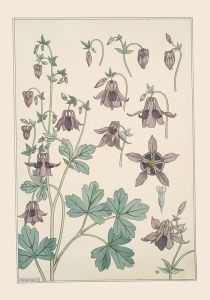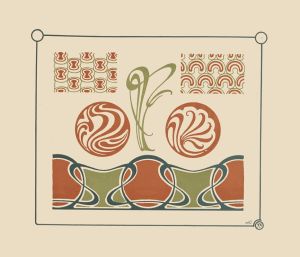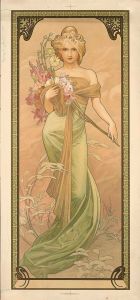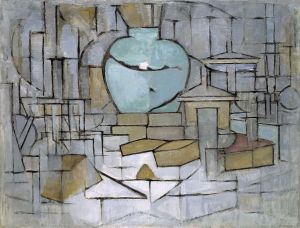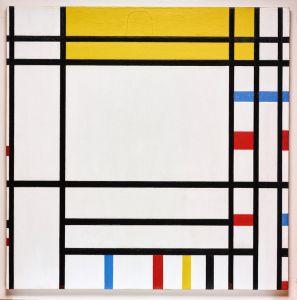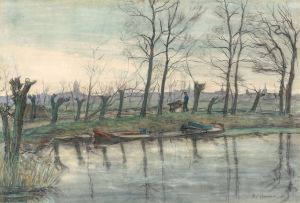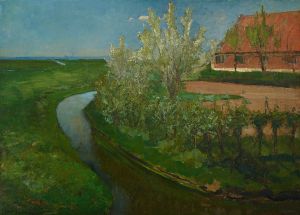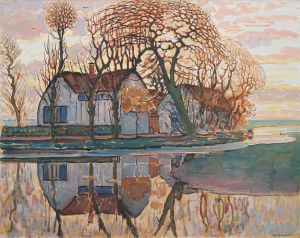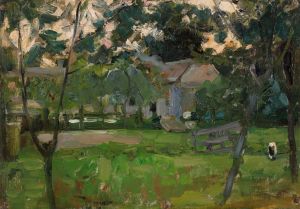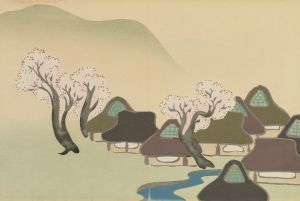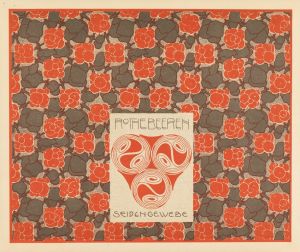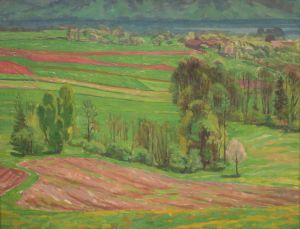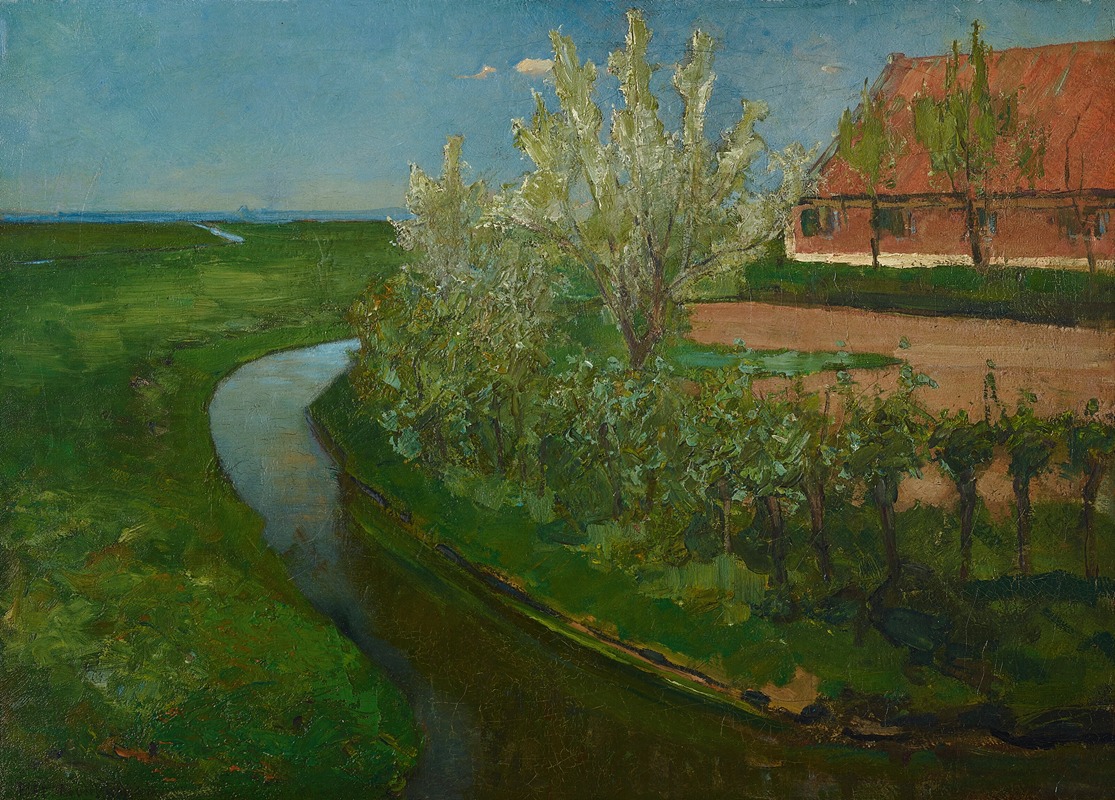
Curved Irrigation Ditch Bordering Farmyard with Flowering Trees
A hand-painted replica of Piet Mondrian’s masterpiece Curved Irrigation Ditch Bordering Farmyard with Flowering Trees, meticulously crafted by professional artists to capture the true essence of the original. Each piece is created with museum-quality canvas and rare mineral pigments, carefully painted by experienced artists with delicate brushstrokes and rich, layered colors to perfectly recreate the texture of the original artwork. Unlike machine-printed reproductions, this hand-painted version brings the painting to life, infused with the artist’s emotions and skill in every stroke. Whether for personal collection or home decoration, it instantly elevates the artistic atmosphere of any space.
Piet Mondrian, a Dutch painter renowned for his contribution to the De Stijl art movement, is best known for his abstract works characterized by geometric forms and primary colors. However, before Mondrian developed his signature style, he produced a number of landscapes and naturalistic paintings. One such work is "Curved Irrigation Ditch Bordering Farmyard with Flowering Trees," which reflects his early artistic endeavors and provides insight into his evolving style.
"Curved Irrigation Ditch Bordering Farmyard with Flowering Trees" is an example of Mondrian's early landscape paintings, created during a period when he was still exploring representational art. This painting is indicative of his interest in capturing the Dutch countryside, a common theme in his work before he transitioned to abstraction. The painting depicts a serene rural scene, featuring an irrigation ditch that curves through a farmyard, bordered by flowering trees. The composition highlights Mondrian's keen observation of nature and his ability to convey the tranquility of the rural landscape.
During the early 20th century, Mondrian was influenced by various artistic movements, including Impressionism and Symbolism, which can be seen in his use of color and light in this painting. The soft, naturalistic palette and the attention to detail in the depiction of the trees and water reflect the influence of these movements. Mondrian's work from this period often focused on the harmony and balance found in nature, themes that would later be abstracted in his mature works.
Mondrian's early landscapes, including "Curved Irrigation Ditch Bordering Farmyard with Flowering Trees," are characterized by their representational style and their emphasis on the natural environment. These works are important for understanding the trajectory of Mondrian's artistic development. They reveal his initial focus on the visible world, which he would gradually move away from as he developed his theories on abstraction and sought to express a more universal aesthetic.
As Mondrian's style evolved, he began to move away from depicting the natural world in a literal sense. By the 1910s, he was increasingly influenced by Cubism and began to experiment with reducing forms to their basic geometric components. This shift marked the beginning of his journey towards the grid-based compositions that would define his later work. However, paintings like "Curved Irrigation Ditch Bordering Farmyard with Flowering Trees" remain significant as they provide a glimpse into Mondrian's early artistic vision and his connection to the Dutch landscape.
The painting is also a testament to Mondrian's skill as a draftsman and his ability to capture the essence of his surroundings. While his later works would eschew representational forms in favor of abstraction, his early landscapes demonstrate his mastery of traditional techniques and his sensitivity to the subtleties of light and color.
In summary, "Curved Irrigation Ditch Bordering Farmyard with Flowering Trees" is a valuable piece within Piet Mondrian's oeuvre, representing a phase in his career when he was deeply engaged with the natural world. It serves as a precursor to his later, more abstract works and highlights the foundational elements of his artistic journey. Through this painting, viewers can appreciate the early influences and themes that Mondrian would continue to explore and transform throughout his career.





